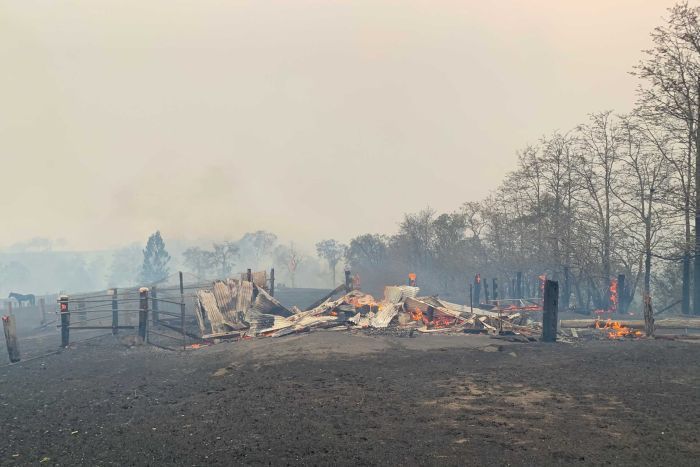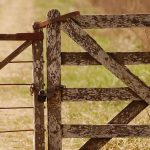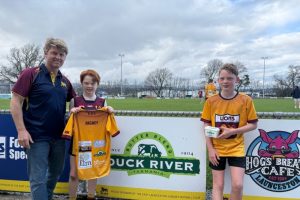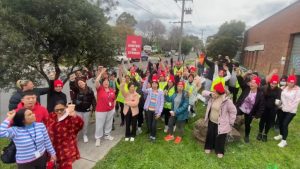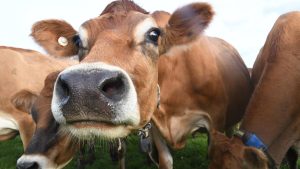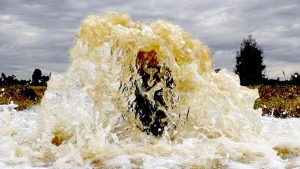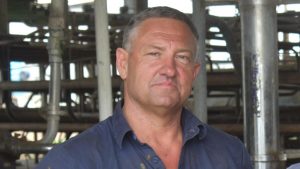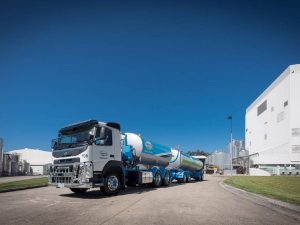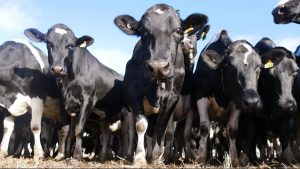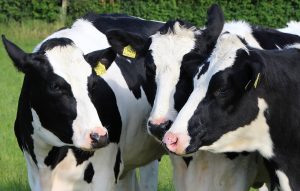
Key points:
Some farmers are spending $12,000 a week on fodder to keep their animals alive
They are concerned the $75,000 bushfire grant, while appreciated, will not be enough
Farmers were already struggling with drought before the fires, with concerns many dairy farmers, in particular, will not survive in the industry
“We’ve been feeding cattle on this property and we’re going through a semi-trailer load of hay a week — approximately $10,000 to $12,000 per semi,” Mr Duff said.
The operators of the cattle breeding property said they were worried producers in northern parts of the state were being forgotten.
So they welcomed yesterday’s announcement by the Federal Government of grants of up to $75,000 for farm businesses affected by bushfire.
But Mr Duff said “$75,000 has virtually been swallowed up just with feeding cattle”.
“We’re just very grateful for any support that we get, and I realise that it is taxpayers’ money that the Government is handing out,” he said.
“So as an Australian to Australian taxpayers — we’re very grateful for any assistance that we get.”
The National Farmers’ Federation (NFF) said the grants would go a long way to assisting farmers to recover, rebuild, and restore productivity.
It has given the Federal Government preliminary advice on the priority assistance requirements of farmers and the most appropriate investment for agriculture flowing from the Federal Government’s $2 billion National Bushfire Recovery Fund.
“The needs of farmers for whom bushfire has destroyed and compromised livestock, vegetation, fences, water and other key infrastructure are great and varied,” NFF President Fiona Simson said.
Mr Duff said the only thing that was going to fix some of the problems was rain.
He wanted to know how he could access the grant and when.
“I understand that it’s up to $75,000, so how’s that going to be played out from farmer to farmer?” Mr Duff asked.
‘Disappointed it has taken so long’
On the South Coast of New South Wales, Bombala dairy farmer Matt Broad said the grants were desperately needed.
“Anything at the minute will be greatly appreciated,” he said.
“It will help with fencing, rebuilding in general, and getting lives back on track.”
Ms Simson said, in its advice to the government, the NFF referenced the success of the $75,000 immediate cash grants administered to flood-affected north Queensland cattle producers early in 2019.
“I’m a little bit disappointed that it’s taken this long,” Mr Duff said.
“I thought that after the floods in Queensland the response time was a lot shorter than what it has been to respond to this situation.”
Prime Minister Scott Morrison said the grants would be administered by the states and would flow to those eligible immediately.
The Duffs had just last week received the $15,000 dollar bushfire grant announced last year but are yet to access any other drought money.
“The paperwork and the red tape that’s involved in accessing RAA [Rural Assistance Authority] money, I mean we applied for it back in August and we still haven’t received anything,” Mr Duff said.
“I think that it just needs to be streamlined, so if this money’s going to be made available a lot easier than what the RAA money is then that would be great.
“There are a lot of people out there who are doing it pretty bloody tough and it might give them a little bit of confidence.”
‘It’s a start’
Mr Duff said a lot of people were already suffering a lot of stress because of the drought.
With machinery, pasture, infrastructure, fences, and a cottage destroyed, as well as cattle dead, the Duffs’ business suffered a loss of at least $1.2 million.
“So it’ll be a start, but we’ve got a long road ahead of us,” he said.
The Duffs did not have an income at the moment either.
“All we’re doing is spending it because we’re trying to put the feathers back on the duck after it’s been plucked, so we’ve got to start again,” Mr Duff said.
Just this week the Duffs started working on fixing 17 kilometres of boundary fence and there was 40 kilometres of internal fence to be repaired.
Prior to that they were just putting water infrastructure in and containment paddocks, trying to muster and feed the cattle.
“Half my day is taken up by just feeding here on this one property — there are another two properties that we have to feed as well, so it’s a big challenge,” Mr Duff said.
“It’s head down and bum up just to try and get the jobs done.”
Mr Duff said dealing with drought and now bushfires was a “mammoth task”.
“Personally, we won’t get over this in the short term, it’s going to be a long-term thing,” he said.
“There are a lot of people in the area who are working off farm, still running cattle, and somehow or another they’ve got to try to resurrect their farms.
“I think the funds are going to help the community in a big way because it will put money in people’s pockets to be able to hire people to rebuild.
“I think that possibly now they realise the enormity of this disaster. I’m just grateful that the government has realised that they need to step in and help people.”
‘Farmers were already struggling before the fires’
Mr Broad said people who were eligible would “be mad” not to take up the offer.
“In this area, you have farmers with anywhere from 30 to 1,000 dairy cattle, so for the bigger producers $75,000 may not be enough, but anything is greatly appreciated,” he said.
“The biggest issue for us is access to fodder since there’s been such a large area burnt.
“The price of fodder is going up, which is only exacerbating the problem more.
“There’s also worry about how much fencing material will be available to rebuild on properties.”
Mr Broad was also concerned about dairy farmers leaving the industry because of the fires.
“Farmers here were already struggling before the fires,” he said.
“Ten per cent of dairy farmers were getting out of the industry last year and after these fires I think that’s going to look like a kids’ picnic in comparison.”
